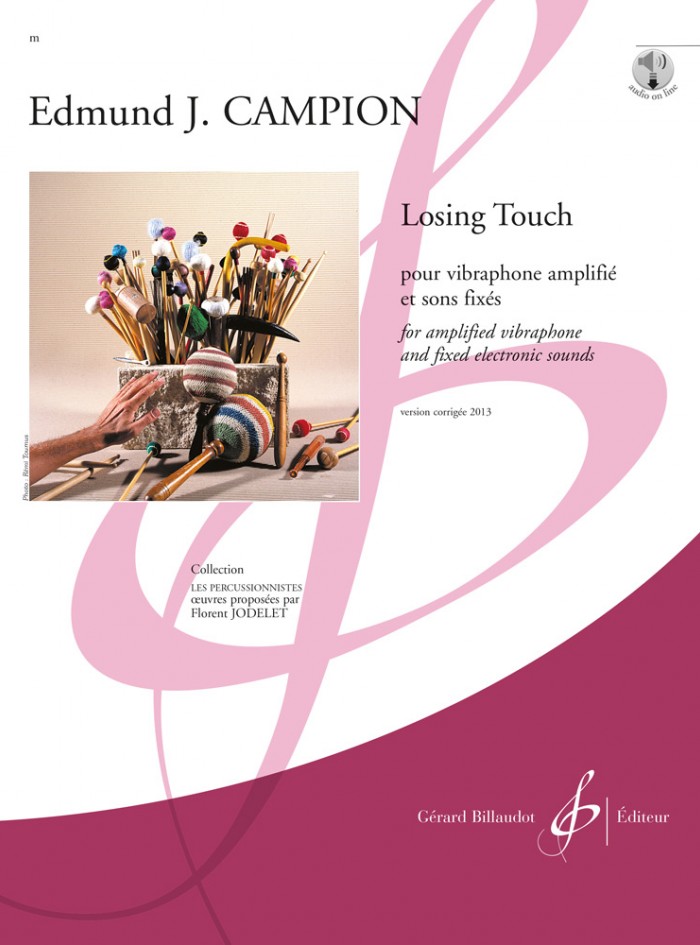

Losing Touch
Losing Touch presents an acoustic and electronic fusion achieved by deriving the electronic sounds from analysis and resynthesis of pre-recorded vibraphone samples. Each strike of a metal bar of a vibraphone involves two distinct layers of activity: the abrupt, complex and extremely short attack followed by the simple, pure and variable-length harmonic resonance. Using the computer program Additive, developed at IRCAM, the composer separated these two aspects of vibraphone sound and then used the results to create a virtual orchestra of vibraphone-based sampled instruments. Using computer assisted composition techniques and the IRCAM program called Patchwork (later Open Music) the electronic part was created in close relationship with the acoustic part. The two are inseparable at times, but as the piece progresses the complicated relationship between a technologically produced electronic sound and an acoustic sound with living musician becomes more and more pronounced. The two aspects of the vibraphone sound separate and “lose touch” with one another, just as the performer and the electronic medium “lose touch” with each other. In the end all elements of the composition come to occupy a space that is appropriate to the divide that separates human from machine.
Losing Touch presents an acoustic and electronic fusion achieved by deriving the electronic sounds from analysis and resynthesis of pre-recorded vibraphone samples. Each strike of a metal bar of a vibraphone involves two distinct layers of activity: the abrupt, complex and extremely short attack followed by the simple, pure and variable-length harmonic resonance. Using the computer program Additive, developed at IRCAM, the composer separated these two aspects of vibraphone sound and then used the results to create a virtual orchestra of vibraphone-based sampled instruments. Using computer assisted composition techniques and the IRCAM program called Patchwork (later Open Music) the electronic part was created in close relationship with the acoustic part. The two are inseparable at times, but as the piece progresses the complicated relationship between a technologically produced electronic sound and an acoustic sound with living musician becomes more and more pronounced. The two aspects of the vibraphone sound separate and “lose touch” with one another, just as the performer and the electronic medium “lose touch” with each other. In the end all elements of the composition come to occupy a space that is appropriate to the divide that separates human from machine.
My account
Forgotten password?I still don’t have an account
Read me
| Type | Index | Main track |
|---|---|---|
| Read me AUTHOR'S NOTE | ||
| Read me REHEARSAL | ||
| Read me SOFTWARES | ||
| Read me PERFORMANCE |
